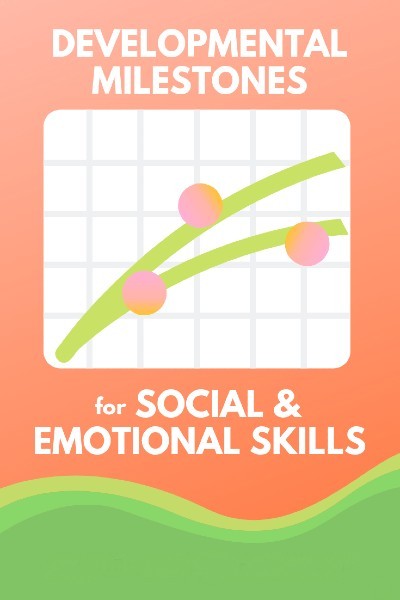As parents, we know how to monitor our child’s physical developmental milestones. When did your child begin to sit up, talk, get her teeth? Many pediatricians even give a checklist and assessment of physical milestones at yearly well-child visits.
But what about social and emotional milestones? Throughout childhood, there are pivotal periods when delays in social development can put children at higher risk for relationship problems in the future.
Based on decades of research literature, we know general trends for social and emotional skills from early childhood through young adulthood. Let’s take a look at what can be expected as children develop their social and emotional skills.
Note: As with any milestone, there can be a wide range of normal experiences, and exceptions to the trends, so please consult your pediatrician if you have specific concerns about your child.

Preschool Developmental Milestones
The preschool years are ripe with opportunities to develop social skills especially as children begin spending time with other kids their age. Play allows them to practice taking turns, winning and losing, sharing and negotiating.
The preschool years are also heavily influenced by parents and caregivers. In addition, siblings and other children are also important for companionship and peer interaction.
Core skills and behaviors developing during this time:
- Cooperating with others, such as sharing toys
- Simple problem solving like taking turns
- Using words to communicate wants and feelings, rather than acting out
- Becoming more independent in things they can control, such as choosing their clothes
Early Elementary School Developmental Milestones
Young children who have attended daycare and preschool have opportunities to play with other children, but it’s typically not until the early elementary school years that children start to develop a strong peer network and ongoing social relationships.
Once children enter grade school, they engage with peers during structured class time as well as unstructured free play. Plus, many children also begin extracurricular activities such as sports, clubs, and attend social events. As their social world expands, kids become increasingly interested in other children their age, making these peer relationships more meaningful.
Core skills and behaviors developing during this time:
- Development of preferred playmates or “best friends”
- More cooperative with rules
- Understands the differences between real-life and pretend play
- Develops sensitivity to the feelings of others
Late Elementary School Developmental Milestones
Between 3rd and 5th grade, social and emotional learning grows rapidly, and peer interactions become significantly more important and influential. At the same time, the social influence of parents is beginning to decrease. Parents become less involved in their children’s day-to-day activities, and less involved in their children’s daily social interactions.
Core skills and behaviors developing during this time:
- Can control anger most of the time and express emotions appropriately
- Show good sportsmanship
- Aware of what’s fair and unfair
- Able to choose the best decision to a problem and analyze if the solution is working
- Spends time with a few close friends
Middle School Developmental Milestones
The social environment changes dramatically from elementary to middle school. Children move from smaller, more protective settings to much larger, diverse and competitive social groups. The social anxiety produced by this transition coincides with the physical changes of puberty and increased academic rigor.
During middle school, peers become increasingly important providers of support, advice, companionship and affirmation. Parental involvement at school and with homework declines.
Core skills and behaviors developing during this time:
- Value the opinion of friends and have a desire to be liked or “popular”
- Compare self to others and sensitive to what others’ think of them
- Becoming more self-sufficient with homework, organizational skills, etc.
- Question authority and family values as their personal morals develop
High School Developmental Milestones
Peer relationships become even more important during the high school years as adolescents struggle to attain greater independence. The process of becoming a young adult, learning to drive, planning for life after graduation, and entering into romantic relationships further distances adolescents from family as they establish their own identity. In this transition, kids increasingly look to their peers to help solve problems, feel good about themselves, and figure out who they want to be.
That’s not to say that parents cease to influence their children or that they stop being core social network members. In fact, parents, siblings and other close relatives continue to provide essential relationship support throughout a child’s lifetime. However, peer influence comes to match or even exceed that of family members.
Core skills and behaviors developing during this time:
- Seek out new experiences
- Increased independence and taking responsibility for own actions
- Understand that their actions have consequences now and in the future
- Know their strengths and weaknesses
Note: Checklists inspired by information found at CASEL, Pathways, and Kiddie Matters.